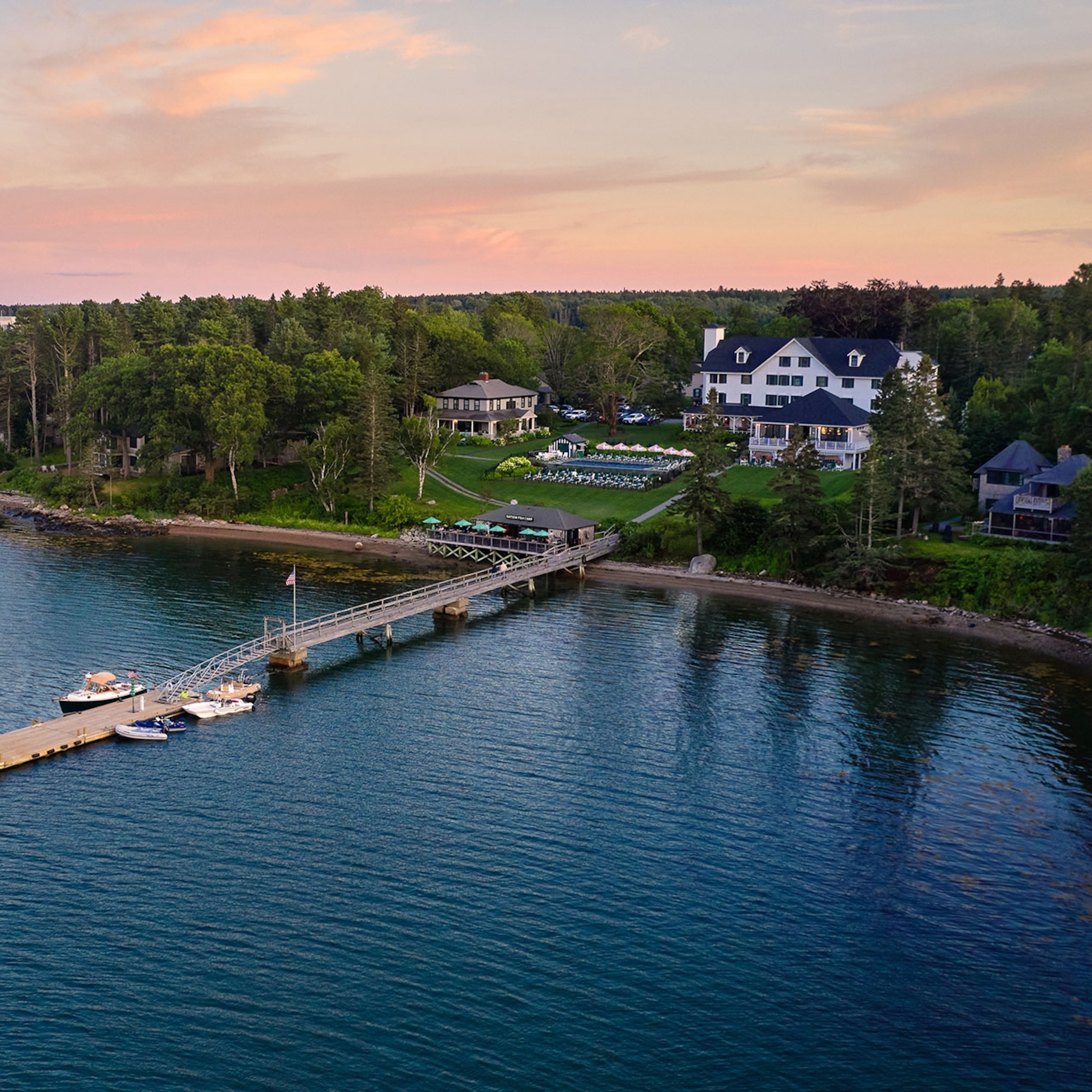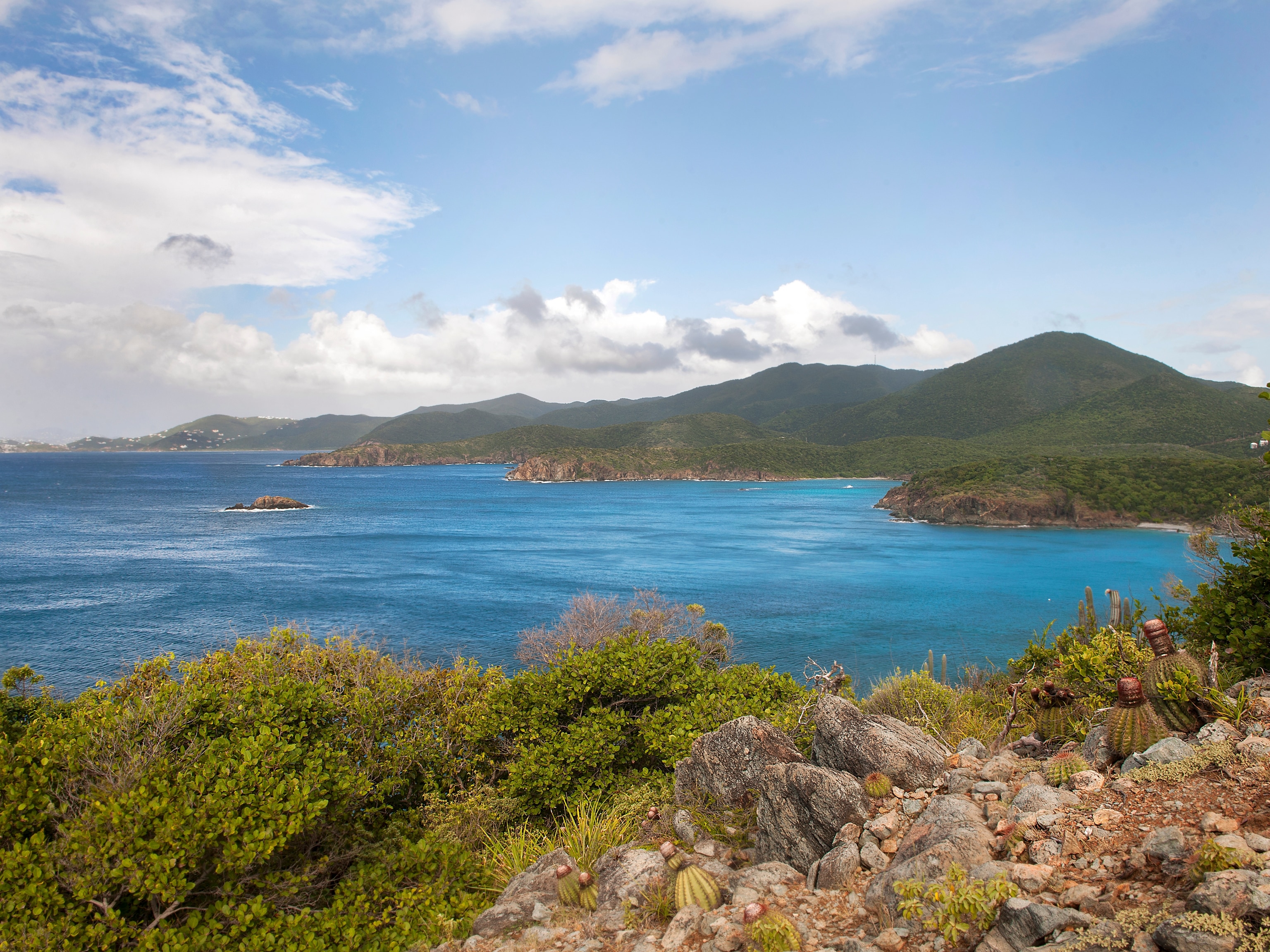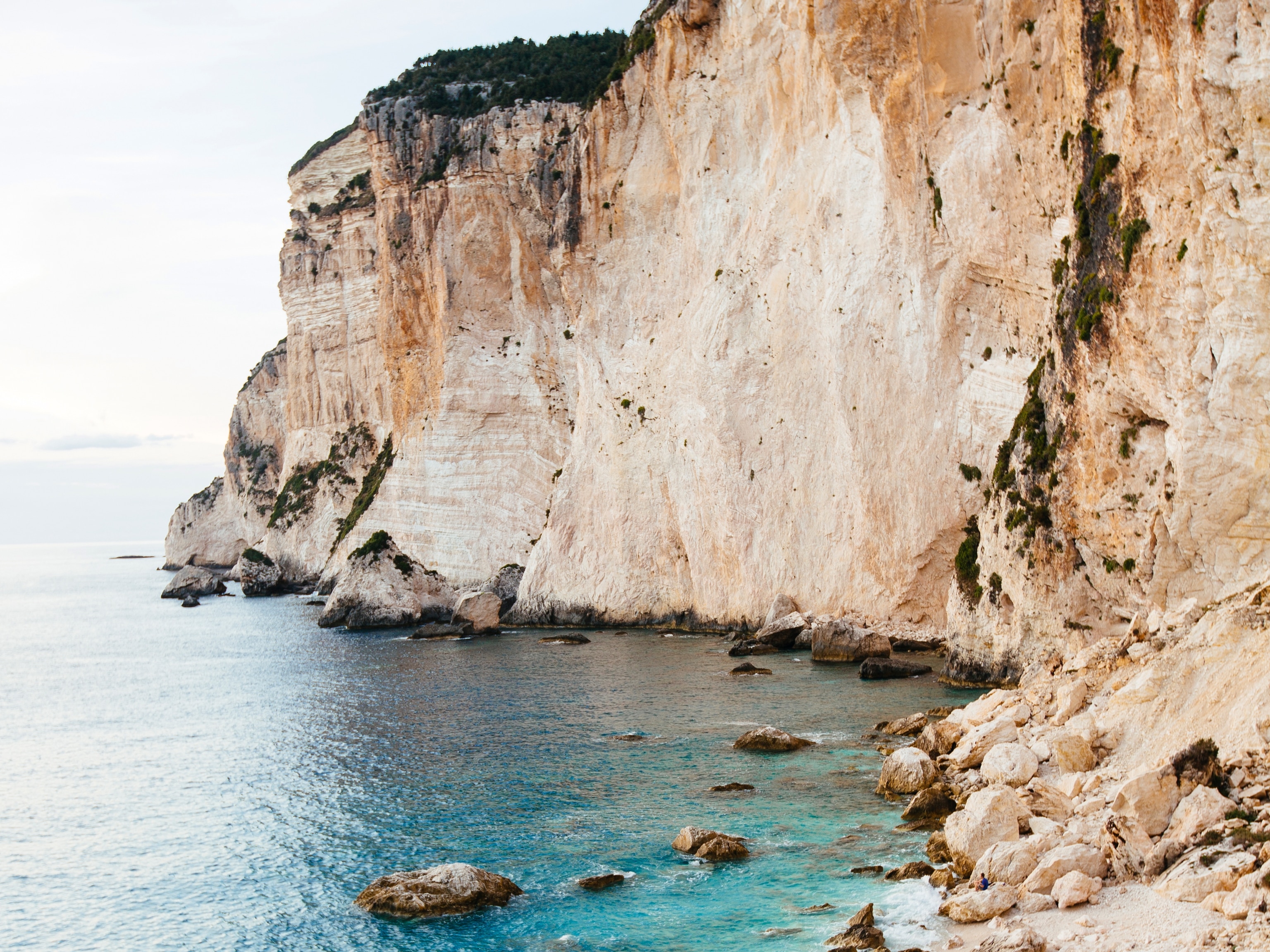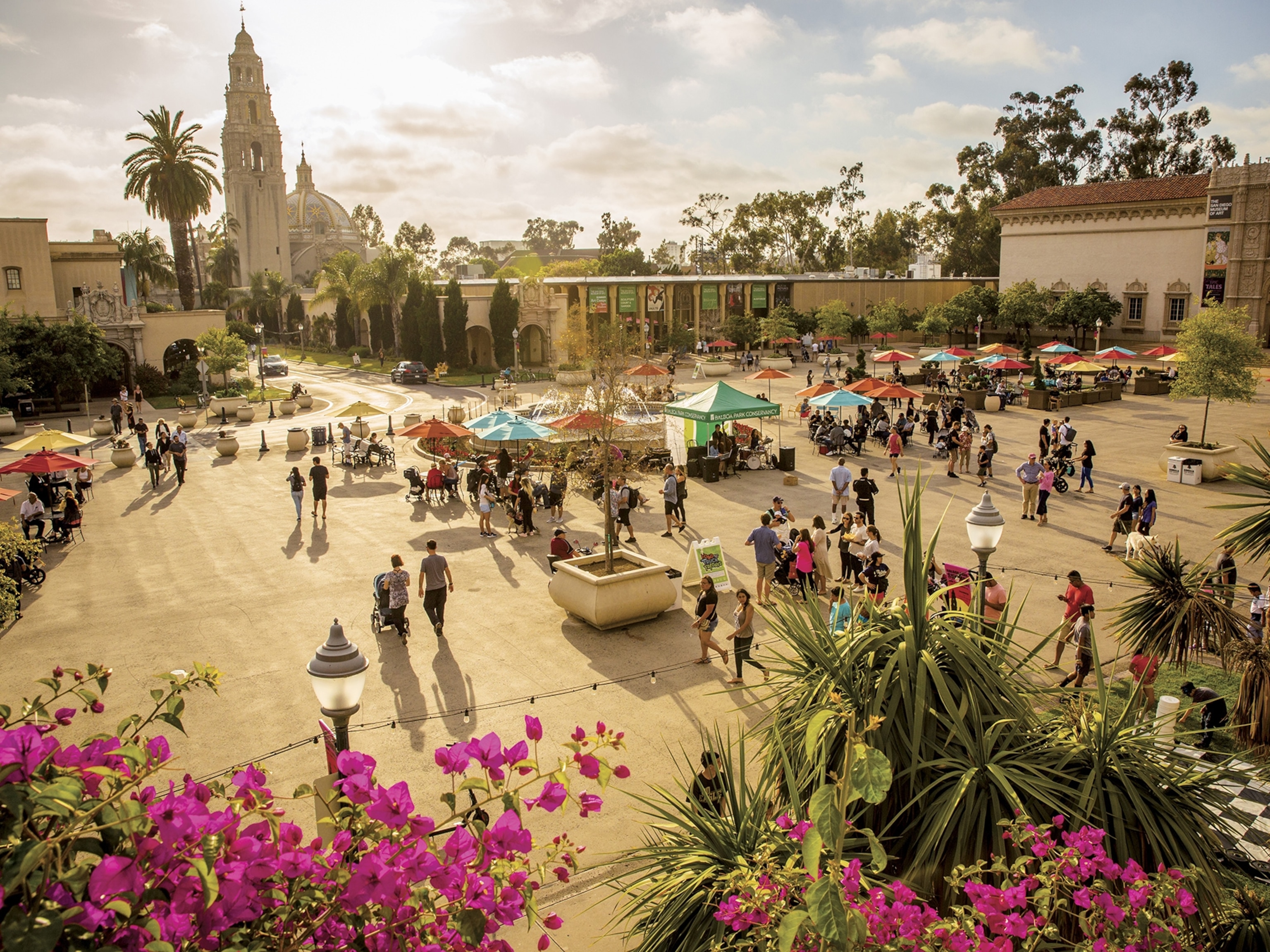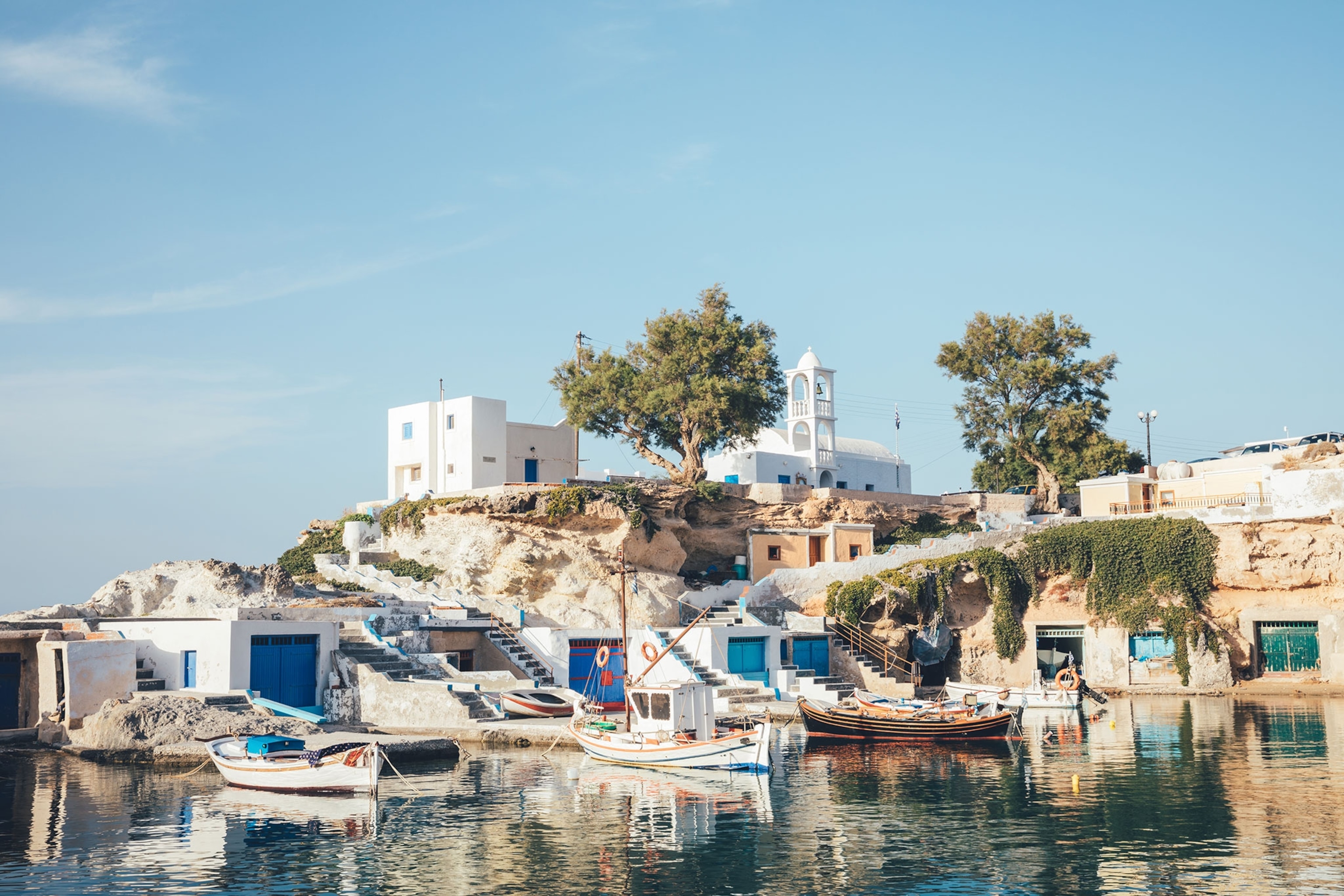
This Greek island offers all the splendor of Santorini without the crowds
Hit the catacombs, pristine beaches, cliffside towns, and fishing villages on this lesser-known Greek island.
Despite its otherworldly beauty, Milos, Greece––located more than 94 miles (152 kilometers) northwest of Santorini––was dismissed by travelers as an ideal island vacation destination. For a long time, Greeks avoided visiting because of the island’s reputation as “too industrial”. Since the Neolithic era, Milos’ main industry was mining.
Santorini and Milos share similar landscapes and geology. The islands' similarities in minerals and precious metals is due to a volcanic eruption that caused the submersion of the African continental plate beneath the Eurasian continental plate more than three million years ago.
Today, Santorini is expensive, overdeveloped, and crowded because of its notoriety as a port for cruise ships and attraction as a Instagram-worthy destination. For those reasons, the lesser-known Milos should be on the radar of travelers in search of awe-inspiring rock formations, archeological sites, and beaches. An abundance of minerals on Milos is one of the reasons why visitors will notice a palette of colors splashed across the cliffs of this island––more varied than the cliffs of Santorini.
Photographer, tour guide, and web designer Andreas Belivanakis explains that Santorini is known for its burnt orange cliffs, Red Beach and black lava beaches, but Milos offers more. “In Milos, though, there’s all colors of the rainbow. All along the rocky shoreline, you’ll see all different colors. Green is bentonite, red is iron oxide, blue is amethyst.”
And there’s no better place to marvel at the many hues of the island than on its more than 70 beaches or from the deck of a boat, especially on the west coast where Milos is uninhabited and not accessible by road.
(What are the 31 best Greek islands to visit in 2024?)
Archeological sites reveal the island's rich history
However, it’s not just the landscape that attracts visitors to Milos now; it’s also the Greek island’s rich history. “I believe that with the exception of Delos and Crete, Milos has more history per square mile than any other island in Greece,” says Andreas, a Milos native who recommends four must-see sites when visiting the island.
Ancient Theater
The relatively well-preserved Ancient Theater is a must-see sight for visitors. It overlooks the Aegean Sea and the harbor of Klima, a small fishing village. Originally built during the Hellenistic period with Roman constructed additions, the Milos theater had four to five thousand seats, but only 700 remain, according to Andreas. Locals deconstructed the marble seats to build their homes and courtyards. After a five-year restoration project that ended in 2015, the theater is now open to the public for hosted cultural events.
Catacombs of Milos
History buffs visiting Milos should visit its historic catacombs that date back to the first century A.D. Situated west of Trypiti, these catacombs are older than Rome’s catacombs and substantially smaller at 600 feet (183 meters) in length. However, guides in Milos say that outside of Rome, these catacombs represent one of the best-preserved and extensive catacomb sites in the world. It’s also touted as the most important early Christian monument of worship and burial site in Greece.

Venus of Milos
Amongst a stand of olive trees and stone ruins, a plaque marks the area where a farmer discovered the Venus de Milo sculpture in 1820. Greeks refer to it as “The Aphrodite of Melos.” The original resides in The Louvre in Paris, but a replica was installed at the discovery site in 2022. A better quality replica can be seen at the Archaeological Museum of Milos.
Ancient ruins of Phylakopi
Although it's temporarily closed, the ruins of Phylakopi is another place Andreas recommends people see when visiting Milos. While much of the site has suffered from substantial erosion, history enthusiasts can visit one of the most important and biggest settlements of the Cycladic culture––remnants including a cyclopean wall, the Mycenean sanctuary, and a megaron, an architectural form consisting of an open porch, vestibule, and a large hall with a central hearth and a throne. The stone, clay, and bronze figurines, in addition to the ceramics excavated from the site, are on display at the Archaeological Museum of Milos.
Visit otherworldly beaches and sea caves
From the most photographed beach to one of the most impressive spots to visit by boat, here are a few recommendations specifically for travelers in search of the best places for sun, sand, and sea in Milos.
Sarakiniko Beach
“For most of its history, [Sarakiniko] was underwater,” says Andreas. “Then there was a volcanic explosion, the last known eruption in Milos, 90,000 to 100,000 years ago. That’s when Sarakiniko rose from the water.”
Not so much a beach as a rare geological phenomenon, the moonscape of Sarakiniko was named after the Saracen pirates who used it as a hideout. Beachgoers can take in the ghostly white volcanic cliffs and sea caves, sculpted by wind and water, while catching sunrays, taking a dip, or canon balling into the water from the tops of sea caves.
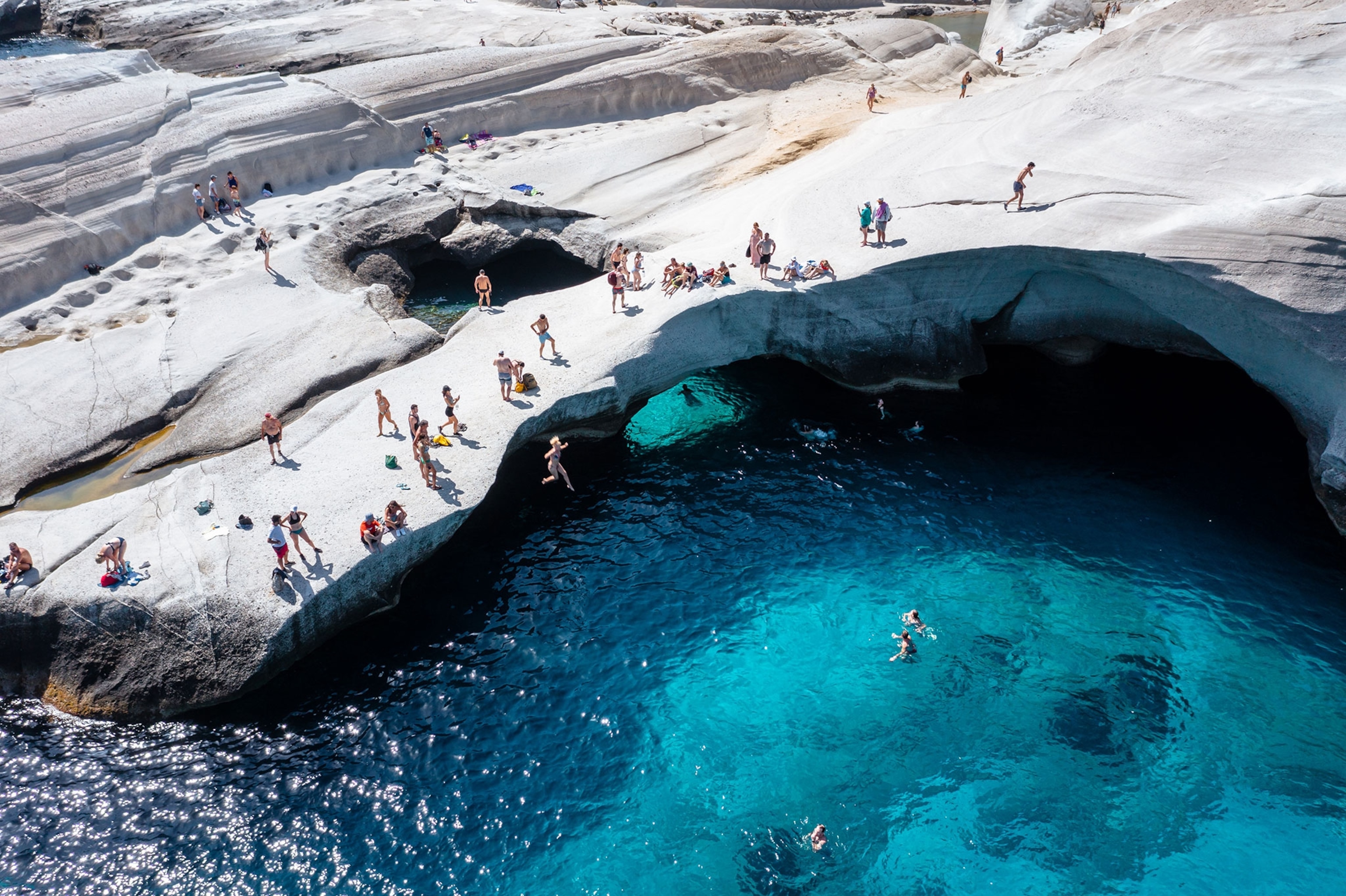
Kleftiko
Located on the southwest coast of Milos, the cove at Kleftiko can be reached only by boat. Luckily, several outfitters offer day tours to some of the island’s sea caves, rock formations, and hard-to-access swimming locations. With its sea caves and giant rocks rising out of the sea, Klefitko provides a postcard-perfect setting for visitors to cavort in the lapis-lazuli waters, explore its sea caves, and enjoy lunch on a boat.
Andreas suggests that the south coast of Milos is home to the best beaches, such as the mile-long Paliochori Beach with its color-sprayed cliffs and the additional bonus of the restaurant Sirocco. “They’ll cook your food in a sandpit,” Andreas says. “Because of the volcanic heat, it’s very hot (215°F / 102°C). It’s an experience not to be missed.”
Other recommended beaches include Gerakas, a beach only accessible by boat; Fyriplaka, an accessible beach with fairly shallow waters; and Ammoudaraki, a small, secluded stretch of sand surrounded by greenery, and nearby cave.
(Go diving! See our list of the best diving locations in Greece.)
Five recommended villages to explore
Of the island’s 14 towns and villages, these five places are recommended for first-time visitors along with a few restaurants to try the local culinary fare.
Adamas
The port town of Adamas, also known as Adamantas, is the largest town on the island. Cretan refugees settled here, establishing it as an official town in 1835. Its charms are hidden in the narrow stone-paved alleyways behind the main strip. Visitors will enjoy its charming shops, white staircases, and pretty churches. Don’t miss O! Hamos, the family-run taverna that serves hyper-local cuisine at Papikinou Beach.
Plaka
Like Santorini’s capital Fira, Plaka, the capital of Milos, is perched atop a high cliff. It features whitewashed churches, quaint boutiques, snoozing cats, and a labyrinth of alleys lined with homes adorned with brightly painted shutters and bougainvillea-draped balconies. Visitors should head to the remains of the 13th-century Venetian Castle for panoramic views of the town and the Bay of Milos, especially at sunset.
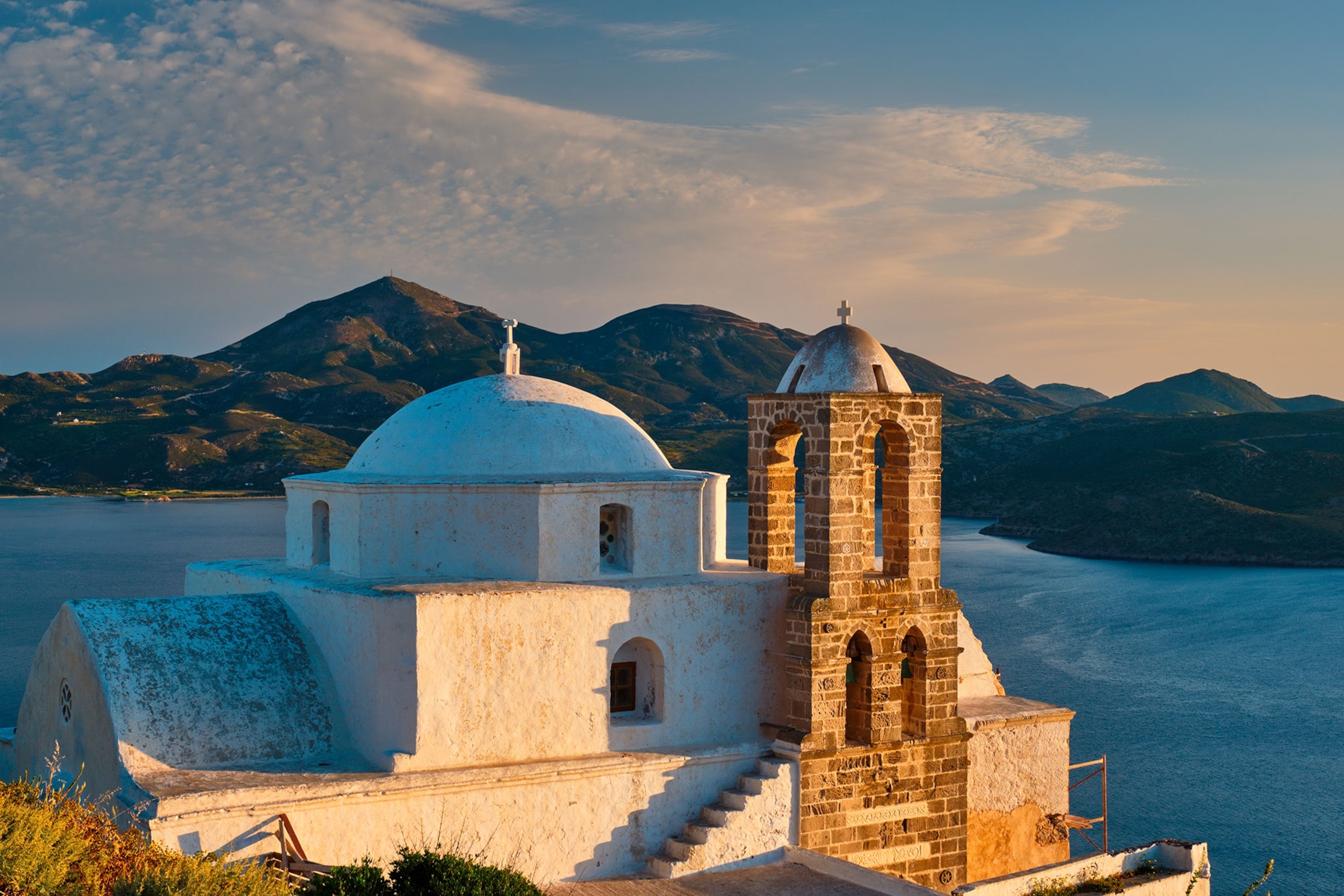
Klima
Klima is the largest of the island’s colorful boathouse (or syrmata) settlements. Exclusive to Milos, a syrmata is a small, traditional two-level boathouse home inhabited by local fishermen. Today, many of the syrmata have been flipped to be used as vacation homes.
Mandrakia
In Mandrakia, the fishermen’s houses are caves carved into the rock by the sea. According to Andreas, this small fishing village has some of the best seafood restaurants, such as Medusa, which has outdoor seating for guests to dine while enjoying the view of the Aegean Sea.
Pollonia
This picturesque fishing village must be entered via an inlet. It’s also known for its cave-aged Melian wine produced by vintner Kostas Mallis, who ferments wines in clay amphoras.
So, if you’re planning a trip to Greece and you’re looking for a less-crowded option to Santorini, you may want to consider exploring Milos and its history, quaint villages, picturesque beaches, and the local cuisine.
(Globetrotting gastronomes should visit these Greek islands.)
